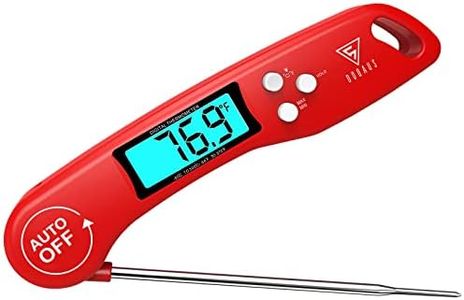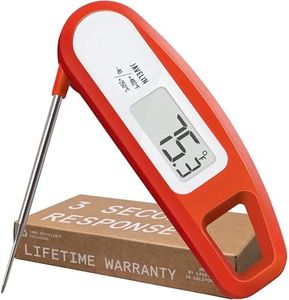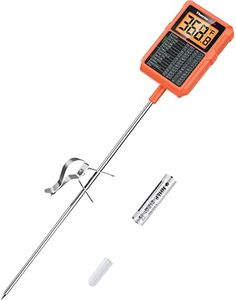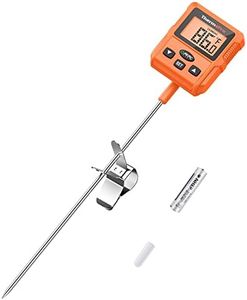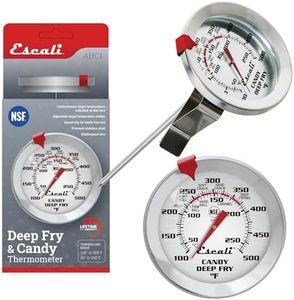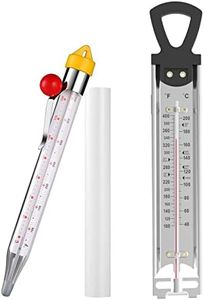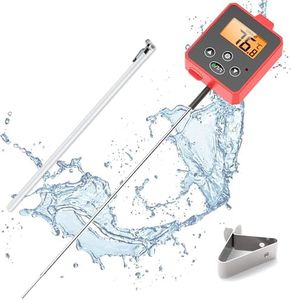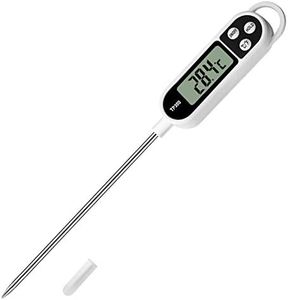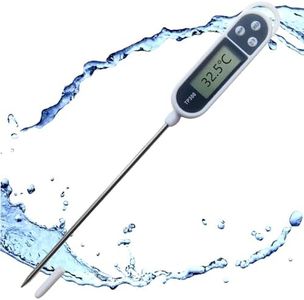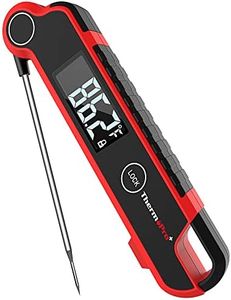We Use CookiesWe use cookies to enhance the security, performance,
functionality and for analytical and promotional activities. By continuing to browse this site you
are agreeing to our privacy policy
10 Best Candy Thermometers
From leading brands and best sellers available on the web.Buying Guide for the Best Candy Thermometers
Choosing the right candy thermometer can make a big difference in your candy making, ensuring your treats turn out perfectly every time. The ideal thermometer will be easy to use, accurate, and suitable for your specific cooking style and recipes. Understanding the main features of candy thermometers will help you select one that fits your needs and gives you the confidence to achieve the right temperatures when making fudge, caramel, or other confections.Temperature RangeThe temperature range tells you the lowest and highest temperatures the thermometer can read. This is important because making candy often involves reaching high temperatures, usually between 220°F and 400°F. Some thermometers only cover a narrow range, which might not be enough for all types of candy. Others cover a broader range, including lower temperatures for tasks like tempering chocolate. If you mostly make basic candies, a standard range will suffice, but for wider use, especially if you want to make both candy and other sweets like jams, look for a broader range.
AccuracyAccuracy refers to how close the thermometer’s reading is to the actual temperature. An inaccurate thermometer can ruin recipes, causing candy to be undercooked or overcooked. Thermometers may vary by a few degrees from the true temperature, so it's important to look for those that have a reputation for precision or the ability to be calibrated. To determine the right fit, consider how crucial perfect accuracy is for your recipes—if you are making delicate candies or need exact results, look for thermometers with a certified accuracy or an easy way to test and adjust them at home.
ReadabilityReadability is about how easy it is to see and understand the temperature reading. Some thermometers use large, clear numeric markings or digital displays, while others may be harder to decipher, especially when steam is rising from your pot. For those who want quick, unambiguous readings, especially if you wear glasses or work in a steamy kitchen, prioritize models with big numbers and good contrast, or digital options with backlit displays.
Material and DurabilityMaterial and durability matter because the thermometer will be exposed to high heat and sugar, which can stick and burn. Most candy thermometers are made from stainless steel or glass. Stainless steel is sturdy and less likely to break if dropped, but glass lets you see the liquid sugar’s progress. If you tend to be a bit rough in the kitchen or want a thermometer that lasts, a strong stainless option is best, while glass is fine for careful users who value a clear view.
Attachment and StabilityAttachment and stability refer to how the thermometer fastens to the saucepan. Many have clips or hooks that keep them steady, which is important to avoid inaccurate readings or the risk of the thermometer falling into hot sugar. If you often make big batches or use different pot sizes, a thermometer with an adjustable, strong clip will serve you better, so it can hold steady no matter what cookware you use.
Ease of CleaningEase of cleaning matters because sugar can stick and harden quickly. Thermometers with simple, smooth surfaces and fewer seams or joints are much easier to wash. If you dislike scrubbing or want to spend less time on cleanup, look for a design with minimal crevices and possibly a removable stem.
Speed of ReadingSpeed of reading refers to how quickly the thermometer provides an accurate temperature. Some thermometers, especially digital ones, can give you a temperature almost instantly, while traditional models take longer to adjust. If you like to work swiftly or make candies that require precise timing, a faster-reading thermometer is more suitable.

